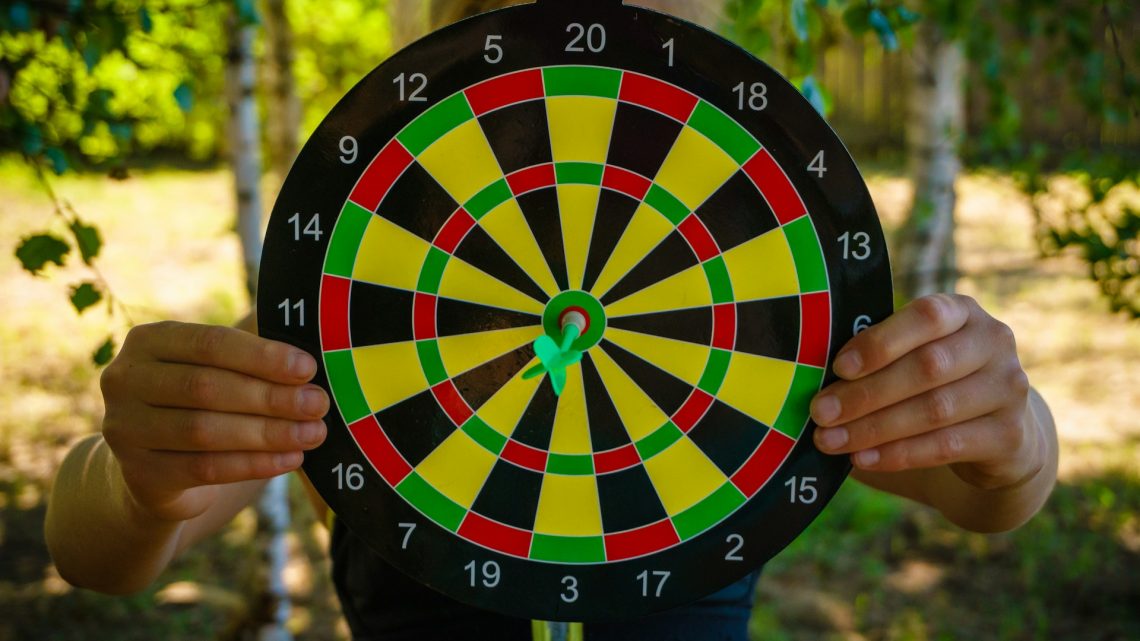
The Power of Visualization in Achieving Success
October 31, 2024 0 By WisdomIn today’s fast-paced, hyper-connected world, the concept of visualization has moved from the realm of athletes and elite performers to everyday individuals seeking success in different areas of their lives. Visualization is more than just daydreaming; it’s a scientifically backed mental technique that involves creating vivid mental images of desired outcomes to boost motivation, focus, and, ultimately, achievement. Whether you’re looking to excel in your career, reach a fitness milestone, build a meaningful relationship, or achieve personal goals, the power of visualization can be an essential tool on your journey to success.
Visualization operates on the simple idea that the mind can be trained to see and feel success even before it’s achieved. By doing so, you prepare yourself mentally, emotionally, and physically for the journey ahead. This technique, when practiced consistently, primes your mind for positive outcomes, making the pursuit of success not just more tangible, but also more enjoyable and fulfilling.
The Science Behind Visualization
Research has shown that the brain does not entirely distinguish between real and imagined experiences. When you vividly imagine an experience, your brain activates the same neural pathways as if you were actually going through it. This fascinating phenomenon, known as “neuroplasticity,” allows the brain to rewire itself based on repeated thought patterns, which can shape behavior and drive success.
A study by neuroscientist Dr. Guang Yue found that participants who merely visualized practicing a skill improved their performance nearly as much as those who physically practiced. When we visualize, the brain sends signals to muscles and tissues, creating a memory of movement. This principle is widely used in sports psychology and among elite athletes who harness visualization to sharpen focus, reduce anxiety, and boost performance.
In terms of achieving success, visualization sets off a chain reaction that influences our actions, beliefs, and confidence. By imagining positive outcomes, we bolster our self-efficacy — the belief in our own abilities. This self-belief is crucial because it drives us to take consistent actions toward our goals, even when faced with setbacks.
How Visualization Works as a Tool for Success
- Setting a Clear Vision: Visualization forces you to define what success looks like for you. A vague dream becomes concrete when you picture it clearly. This clarity translates to a stronger commitment to your goals, as you have a mental blueprint to guide you.
- Enhancing Motivation: Visualizing the rewards of success can act as a powerful motivator. Imagining yourself enjoying the fruits of your labor, whether it’s a promotion, a healthier body, or a fulfilling relationship, can increase your motivation to persist, even when challenges arise.
- Creating Emotional Resilience: The road to success is rarely linear. Visualization enables you to mentally prepare for setbacks and visualize yourself overcoming obstacles. When faced with real-life challenges, you’re less likely to be thrown off course, as your mind has already rehearsed ways to handle adversity.
- Sharpening Focus: A clear mental image helps you concentrate on what truly matters. It filters out distractions and allows you to direct your energy toward actions that align with your goals. Visualization trains your brain to identify opportunities that may otherwise go unnoticed.
- Improving Self-Confidence: When you visualize success, you mentally reinforce the belief that you are capable of achieving your goals. This confidence translates into a self-assured attitude that influences your body language, decision-making, and interactions with others.
Practical Steps to Harness the Power of Visualization
To make the most of visualization, it’s essential to approach it as a structured, purposeful practice rather than a fleeting exercise. Here are some steps to create a powerful visualization routine:
- Define Your Goal: Begin by choosing a specific goal that you want to achieve. This can be a long-term ambition, like building a successful career, or a short-term goal, like acing an upcoming presentation. The clearer your goal, the more effective your visualization will be.
- Create a Detailed Mental Image: Visualization is most effective when it involves vivid, sensory-rich details. Imagine yourself achieving your goal: see the environment, hear the sounds, feel the emotions. For instance, if your goal is to become a public speaker, picture the stage, the audience, and the sound of applause. The more realistic you make this mental picture, the more powerful its impact on your brain.
- Engage Your Emotions: Emotions play a significant role in strengthening neural connections. When you visualize, try to evoke the feelings of joy, pride, or relief that will accompany your success. Feeling the emotions in your visualization will anchor the experience in your mind, making it easier to recall during challenging moments.
- Repeat Regularly: Like any skill, visualization requires practice. Make it a daily ritual to spend a few minutes visualizing your goal, ideally in a quiet place where you won’t be disturbed. Over time, the mental image becomes a part of your psyche, motivating you to stay on track.
- Combine Visualization with Affirmations: Positive affirmations can enhance the impact of visualization. Phrases like “I am capable of achieving my goals” or “I am deserving of success” help counter negative self-talk, reinforcing your belief in your ability to succeed.
- Include Realistic Challenges: Visualization is not about creating a perfect, obstacle-free journey. Imagine facing potential setbacks and visualize yourself overcoming them. This approach prepares you for challenges, reducing the likelihood of giving up when faced with real-life obstacles.
Visualization Techniques for Different Goals
Visualization is a versatile tool that can be adapted to various goals. Here are a few ways you can apply it in different areas of life:
- Career Goals: Visualize yourself performing confidently in your desired role, nailing presentations, or leading projects. Imagine interactions with colleagues and the satisfaction of reaching career milestones.
- Health and Fitness: See yourself exercising with enthusiasm, making healthy choices, and feeling energized. Picture yourself enjoying a fit, healthy body and the benefits it brings to your life.
- Relationships: Visualize yourself communicating openly, building trust, and connecting deeply with loved ones. See yourself resolving conflicts calmly and enjoying moments of mutual support and happiness.
- Personal Growth: Imagine yourself adopting new skills, taking on challenges, and growing as a person. Picture yourself stepping out of your comfort zone and feeling fulfilled by each accomplishment.
Common Pitfalls and How to Avoid Them
While visualization is a powerful tool, it is not a magic solution that guarantees success without effort. Here are some common pitfalls and tips to avoid them:
- Lack of Action: Visualization should inspire action, not replace it. Remember that success requires effort and consistent work. Use visualization as a motivational tool, not as an escape from hard work.
- Unrealistic Expectations: Visualization alone cannot create miracles. It’s essential to set achievable goals and realistic timelines. Instead of focusing solely on the end result, visualize the steps needed to get there.
- Overthinking Negative Scenarios: While it’s beneficial to prepare for obstacles, avoid dwelling excessively on potential failures. Focus on visualizing how you’ll overcome setbacks rather than fixating on worst-case scenarios.
- Impatience: Visualization is not an instant solution. It requires time and persistence. Be patient with yourself and trust the process. The effects of visualization compound over time, reinforcing positive behaviors and attitudes.
Success Stories and Examples
Visualization is widely used by successful people in various fields. For instance, Oprah Winfrey, an advocate of visualization, often credits it for helping her envision her path to success. Jim Carrey, too, famously visualized himself becoming a successful actor by writing himself a $10 million check for “acting services rendered.” A decade later, he received a $10 million check for his role in Dumb and Dumber.
In sports, Olympians like Michael Phelps use visualization to mentally rehearse every race, seeing themselves winning even before they step onto the starting block. Such examples highlight how visualization can bridge the gap between potential and achievement by making success feel attainable.
Final Thoughts
Visualization is a powerful, accessible tool that can significantly impact your journey toward success. By creating a clear mental image of your goals, you’re not just daydreaming; you’re training your mind to embrace success and encouraging your body to take actions that align with your vision. The power of visualization lies in its ability to transform a vague desire into a compelling mental reality, pushing you to take concrete steps toward making your dreams come true.
To maximize the benefits of visualization, remember that it’s a practice that requires dedication, patience, and an open mind. Embrace the process, and over time, you’ll find that the vision of your success becomes an integral part of who you are — a reality you’re working toward every day.
Related
Related posts:
- 10 Habits to Boost Your Productivity Daily
- 8 Ways to Cultivate Self-Love Every Day
- 13 Signs It’s Time to Take a Break from Social Media
- 10 Habits to Start for a Better Night’s Sleep
- 10 Small Changes for Big Improvements in Mental Health
- How to Improve Your Focus in a World Full of Distraction
- How to Understand and Manage Your Energy Levels

